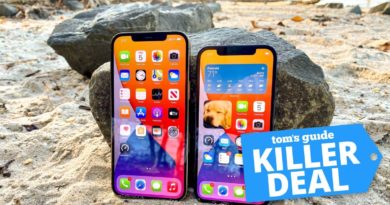LG V60 ThinQ 5G arrives this week for $200 less than Samsung Galaxy S20
Nearly a month after announcing its next flagship, LG has revealed the price of the upcoming V60 ThinQ. And while it isn’t necessarily cheap, the LG V60 is markedly less expensive that the likes of the Samsung Galaxy S20 and iPhone 11 Pro.
The LG V60 ThinQ 5G will cost $799 from T-Mobile when it arrives on Friday (March 20), though that’s without the optional dual screen attachment, which outfits the device with a second 6.8-inch, full-HD+ OLED panel for running two apps simultaneously.
Those who want the additional real estate will have to spend an extra $100 for the attachment at T-Mobile, driving the price up to a very reasonable $899. T-Mobile customers can also snag a second device as part of a buy one, get one free promotion, though the language in T-Mobile’s press release is a bit vague on what exactly buyers need to do to take advantage of the deal.
Verizon will also sell the V60 ThinQ 5G, though only in dual screen guise, for $949. Verizon is running a buy one, get one free promotion for customers adding a new line with an unlimited plan, however the V60 won’t make it to Big Red until April. (Verizon’s version of the phone will run on the Verizon 5G network, which is built on different technology than what other carriers are using at present — hence, the likely reason for the delay.)
Finally, AT&T has an offer of its own, giving away a free V60 ThinQ when new subscribers switch from other carriers, or purchase the device on a qualifying plan. Like at T-Mobile, the V60 will arrive there on March 20, though you will only be able to buy it with the second screen, for $900.
Those aren’t particularly bad prices when you consider the cheapest Galaxy S20 goes for $999, has a slightly-smaller 6.2-inch display to the V60’s 6.4-inch panel and doesn’t come with an optional second screen. Of course, the S20 offers several luxuries the V60 doesn’t — like an extra 4GB of RAM and a 120Hz refresh rate — though those likely don’t qualify as necessities for most buyers.
What the V60 does have is 5G connectivity on T-Mobile, AT&T and Verizon, as well as a headphone jack. Both are rarities these days, though the headphone jack ironically feels a bit more special at a time when progressively fewer flagships are boasting the port.
Power users should also find some use in LG’s Dual Screen attachment, which we liked when we reviewed the LG G8X ThinQ Dual Screen last fall. We found the integration with the second screen wasn’t always ideal and held back by some pesky software bugs, but it was largely serviceable for running apps side-by-side, or using one of the screens as a virtual gamepad to play a given title in the other window.
You can look forward to our review of the LG V60 ThinQ 5G in the coming days.


